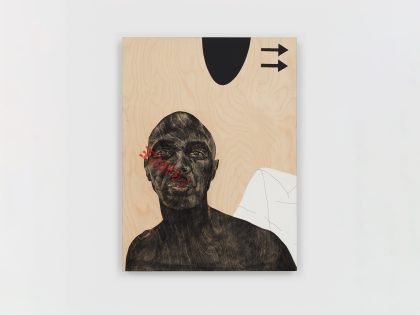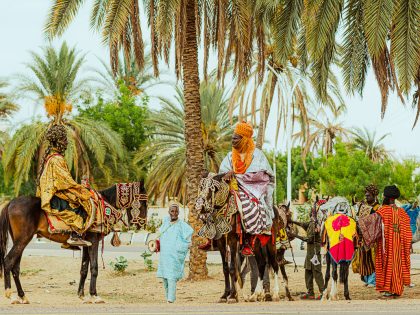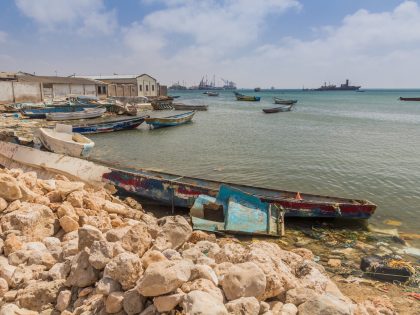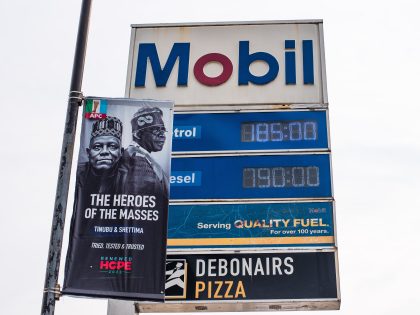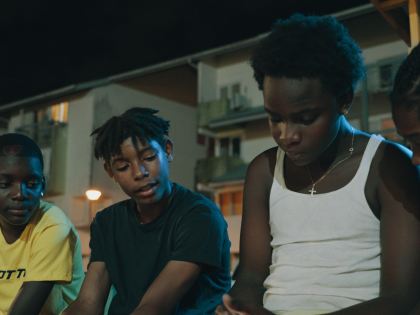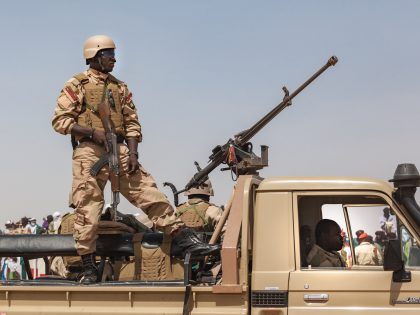National Geographic explores Zimbabwe’s pre-election pulse

Two initial thoughts on Alexandra Fuller’s “Breaking the Silence: Oppression, Fear, and Courage in Zimbabwe” in the May 2013 National Geographic Magazine: First, anything by Alexandra Fuller will be an excellent read, and second, how will the photos accompanying the text manage to portray Zimbabwe? The first time I read the article was on a phone with text only and no way to access the many multimedia images and slideshows characteristic of National Geographic’s conversion from print to digital media. Based only on Fuller’s text my initial feelings were positive: that she has managed to bring to life, with her talents for minimalist details, the underlying power of Zimbabwean resistance to years of dictatorship and one-party rule.
Later, when I had a chance to view the article on a computer with all the accompanying multimedia and the photographs by award-winning photographer Robin Hammond, I realized that this is more reminiscent of the National Geographic I grew up reading as a kid, the one that objectifies and decontextualizes Africans, leaning toward the aesthetic value of the image, the National Geographic that exoticizes Africa for a mostly North American audience.
It is a powerful trope that whole generations of Americans grew up with, including myself. Unfortunately, Robin Hammond’s images that accompany Fuller’s article only work to further distance the readers of National Geographic from Zimbabweans, as readers will likely associate his images of victimization with similar images in National Geographic, and those often found in the color images of the New York Times and other media sources on Africa. For many audiences that are not in tune with Africa, this victimization trope is their primary media encounter with Africans and Africa. There is no question that Hammond is a brave and talented photojournalist who has taken risks and has been jailed in Zimbabwe while working for the UK Sunday Times. Just to be clear, my criticisms here are not of his work but the editorial selections of his photographs with Fuller’s text.
Alexandra Fuller’s text is ultimately meant to be uplifting, showing the confidence of Zimbabwean artists, activists, and victims of political violence to continue their challenges against the dominance of the Zimbabwe African National Union-Patriotic Front (ZANU-PF) as the country heads toward elections this year. Fuller provides a helpful summary of the weakness of the government of national unity that came about after ZANU-PF supporters and militias attacked opposition supporters in 2008, as well as their own potential supporters, to guarantee Mugabe’s re-election in a presidential run-off election against Morgan Tsvangirai and the Movement for Democratic Change (MDC). She then turns to current efforts to challenge autocratic laws and the very real foreboding about another round of political violence in the 2013 elections.
She displays an impressive knowledge of the Zimbabwean situation, both as expressed in the written article and the linked podcast conversation she has with National Geographic’s articles editor, Oliver Payne. In the text version, she cites interviews with Wilf Mhanda, a former Liberation War leader and a current critic of ZANU-PF’s rule. She also interviews playwright Tafadzwa Muzondo who continues to write critical plays, and describes meeting Muzondo in the Harare Gardens behind the National Gallery in Harare to avoid government snoops. She relates her meetings with two advocates for rape victims, Rutendo Munengami and Margaret Mazvarira, and the reader feels the anger, and conviction to move forward, as both women relate their own rapes that occurred as punishment for their association with the opposition movement, or for being related to activists, and their subsequent work to help other rape victims.
Fuller concludes by invoking Mazvirira’s voice, allowing her to make an appeal to the world outside of Zimbabwe, “So please tell your world not to turn the page on us yet. Tell them to keep hearing us. We are still speaking.” It is a powerful request for solidarity, and when taken together with Fuller’s podcast interview, it is much less of a fatalistic message than might be assumed. When editor Payne suggests to Fuller that Zimbabwe represents a tragedy (starting at 14:19 in the podcast), Fuller is quick to counter this by pointing out that those who would write off Zimbabwe as a ‘tragic’ case miss the point that Zimbabweans are confronting the abuses of power in their country and moving forward toward a more democratic dispensation.
Fuller should be commended for her continued attention to a nation that has been the source of her books and for the sober tone of her reporting here. The problem, however, is that the overall message of this National Geographic piece, because of the selection of photos to accompany the story, is to overemphasize a sort of hopeless victimhood that lends itself to inaction and the very same sense of ‘tragedy’ that Fuller’s story argues against.
The ten photos by Robin Hammond that accompany the piece tend to emphasize suffering rather than resilience. The urban photos in particular convey an environment that is stark, dark, foreboding, and insufferable. The first image (above), with the dark green hues familiar of municipal paint in former township hostels, features only a part of a young child’s body who “peers from a room in a hostel outside the capital, Harare”. The young child’s face and eyes are illuminated by a ray of sunlight in an otherwise dismal hallway with only a ZANU-PF poster featuring President Mugabe’s image adorning the wall. A large padlock over the child’s head evokes imprisonment and fear. There is one photo of a well-dressed fully clothed man (top) walking in front of well-stocked fruit and vegetable sellers, but the caption reads, “A bustling street in Bulawayo belies the reality of a wrecked economy.” This contrasts markedly with Fuller’s description of Harare in 2012:
An influx of diamond money—the 2006 discovery of diamonds in the east of the country has been called the biggest find of its kind—had lent a Botoxed sheen to the place: adoption of the U.S. dollar had simplified trade, new cars were on the roads, shops were full of South African imports, mansions mushroomed behind massive walls in the suburbs beyond State House.
The featured photos accompanying the text are typical of NG’s traditional portrayal of Africa but the most disturbing feature, and in my view done with the poor taste of over-the-top gravitas, is a slide show called “Audio gallery: Speaking Out”. This multimedia slideshow features six Zimbabweans each portrayed individually and set within a dark black background, with minimal light, and without any hint of their physical surroundings—a characteristic central to “victim” photography, as noted by Audrey Graham in her criticisms of photojournalists covering rape victims in the DR Congo. (Kathryn Mather’s recent AIAC post on “The Relationship between the Visual and Text” is also useful in this context.)
Hammond’s photos had the potential to be a positive feature, but the editorial decision to frame these individuals in blackness, juxtaposed with rather unfortunate clothing selections—for example, the first subject, a 14-year-old girl named “Evelyn” who is living as a refugee in Musina, South Africa, is wearing an animal print top—gives the unintended impression of “otherness” that National Geographic has managed to portray for over one hundred years. The feature is presented as an “Audio gallery”, but the sound bites are minimal and mostly without context. The visual remains more powerful and stereotypical.
The photo layout selections and the “Audio gallery: Speaking out” feature raise some basic questions. For example, why didn’t National Geographic use photos of some of the artists and activists Fuller interviewed? One gets the sense that Fuller and Hammond were not on the same trip, and certainly not on the same page. Hammond, in his accompanying interview, “Caught in Zimbabwe” explains that he got out as early as 4 am to take photographs before he attracted attention as a white man taking photos. Perhaps if he took more photos during regular working hours, or if National Geographic had a Zimbabwean photojournalist do some of the photos, the images would have been more representative of Zimbabweans generally—as in the one below by Tsvangirayi Mukwazhi—and more importantly those who are actively working for a better society, for themselves and for the many marginalized working poor who Hammond captures in the early morning hours.

In the online multimedia version, why couldn’t National Geographic include links to stories and photos of professionals and other Zimbabweans who have been championing the causes of democracy and justice for victims of political violence in Zimbabwe? As Dan Moshenberg has blogged, the case of Jestina Mukoko’s abduction and torture in 2008 is an example of the treatment experienced by well-known Zimbabweans. As director of the Zimbabwe Peace Project, National Geographic might have linked to Mukoko’s personal account of the torture she endured during three months captivity in 2008. Links to any of a number of human rights reports, such as those issued by Solidarity Peace Trust going back to 2002, might help interested Americans follow up and learn more about their work. For example, given the topic of rape as a weapon of political oppression related by Fuller, a link to the many reports by the Harare-based Research and Advocacy Unit on the topic of sexual violence would be appropriate. For that matter, MDC-T leaders such as Prime Minister Tsvangirai, Finance Minister Tendai Biti, and Information Communication Technology Minister Nelson Chamisa all experienced physical beatings at the hands of the police before the Government of National Unity was formed. Their photos could be included, showing them at the time of their beatings in 2007 and updating what they are doing now. If not these men, then perhaps there could be photos of Amai Sekai Holland, who was also severely beaten in 2007 and who is now a Co-minister of State for National Healing, Reconciliation and Integration.
This is not say that Zimbabwe’s most marginalized citizens, working poor, those living with HIV, and Zimbabwe’s orphans should be ignored and replaced in the photo essays by more engaged voices of resistance, it is just the complete absence of the latter in the multimedia and photographs will likely mean that readers, who may only view the images, will ignore Fuller’s attempt to highlight some of Zimbabwe’s advocates for change. It is a pity that such excellent writing has been packaged with such poor editorial decisions about images. The photos leave the viewer with a sense of hopelessness precisely because the viewer will not see any photos of the talented and brave Zimbabweans fighting for change. Even though it is too late to change the print edition, it is still possible for National Geographic to make changes to their multimedia website to correct the skewed portrayal outlined here.
Another problem that could be fixed has to do with the multimedia map presentation, entitled “A Corrupt and Bloody Regime” consisting of 10 maps from 1965-2012. The maps are meant to highlight the physical distribution of violence over time. However, the viewer is presented with the first map of Rhodesia with no bloody red spots on it. In fact, it isn’t until the 1998 map that the red dots begin to appear, getting increasingly larger for the violent 2002 and 2008 elections. It would be helpful to add statistical representations of the violence during the Liberation war and the Gukurahundi on the map, thus correcting what is now an ahistorical portrayal of Rhodesian and Zimbabwean violence. The Zimbabwean civic organization Sokwanele has already developed an extensive map of political violence in 2008 and they continue to follow and map violence in the run up to the 2013 elections.
Fortunately, there are now many other ways of getting images and news from Zimbabwean sources. Unfortunately, National Geographic still has a print subscription base of over 4 million. Countless school children, bored patients waiting at the Doctor’s office, and families will more likely than not look at the pictures and read the captions rather than read and process all of Fuller’s article or listen to her podcast.














